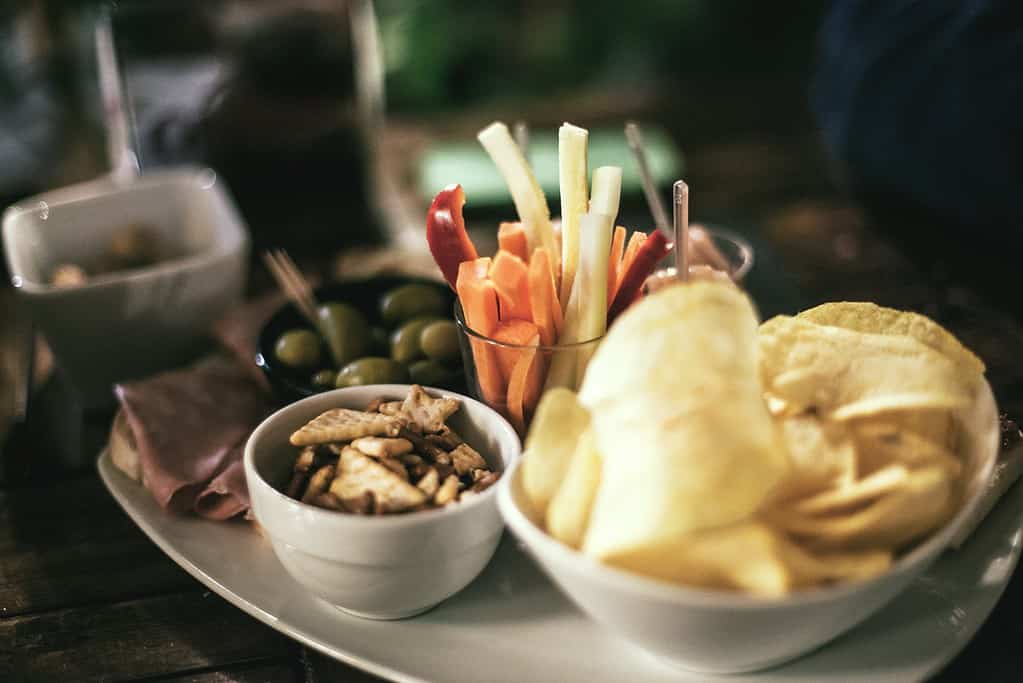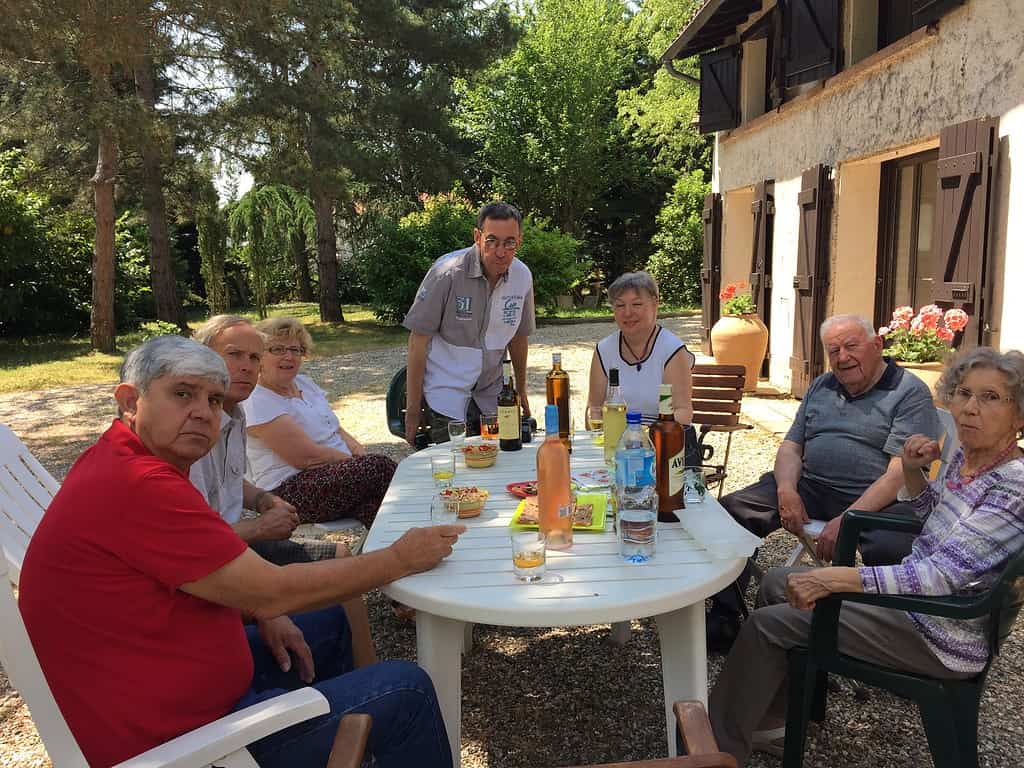If you’ve ever spent an evening in France, you know there’s a moment, just before dinner, that feels almost magical. The table isn’t set for a meal yet. Instead, a few bottles are brought out, small bowls of salty nibbles appear, and conversation begins to flow. This is the apéro — short for apéritif — one of the most cherished rituals of French living.
What Is an Apéro?
The word apéro comes from apéritif — a drink served before dinner to stimulate the appetite. But in truth, the drink is only part of it. The French use the word apéro to describe the entire ritual of gathering before a meal: sipping, nibbling, and enjoying each other’s company.
The French wouldn’t dream of hosting dinner guests without first offering an apéritif. It’s also common to meet friends at a café for a quick apéro before heading home. In many ways, it’s the French version of “happy hour,” but the focus is less on the drinks and more on the connection.
A Childhood Memory
As a child, I remember sitting at my grandmother’s table in France during this special time of day. She would bring out her collection of apéritifs and an assortment of mismatched glasses, then set out little bowls of nuts, olives, or crackers.
While the adults sipped and chatted, I would enjoy my own sirop de fraise (a strawberry syrup mixed with water) and listen in. To me, it felt like being part of a sacred ritual — one that set the tone for the evening meal. Today, as an adult, I join the conversation and appreciate even more the beauty of this tradition.
Popular French Apéritifs
Over the years, I’ve discovered my favorites, and each has its own character:
- Muscat — A sweet, fortified wine, golden in color, served chilled in a small glass. It pairs beautifully with salted nuts.

- Ricard — Quintessentially French, an anise-flavored spirit diluted with ice-cold water (1 part Ricard to 5 parts water). Refreshing on a hot day, especially with olives.

- Banyuls — A sweet, fortified red wine from the Languedoc-Roussillon region, often compared to port. Best served slightly chilled.
- Kir — A classic made with dry white wine and a splash of crème de cassis (blackcurrant liqueur). Festive, fruity, and simple.
- Champagne — The most celebratory choice, sometimes mixed with cassis to make a Kir Royale.

What to Serve with an Apéro
Snacks are simple — the point isn’t to fill up before dinner. Think:
- A small bowl of olives.
- Roasted or salted nuts.
- Crackers or thin slices of baguette.
- A few cubes of cheese.
The emphasis is on ease and enjoyment, not fuss or formality.

How to Host an Apéro at Home
Bringing this French ritual into your own home is easier than you think:
Enjoy the moment — the apéro is about conversation, not perfection.
Choose 1–2 drinks to offer (a bottle of muscat, a Kir, or even sparkling water with a slice of lemon).
Set out small bowls of salty nibbles.
Relax about the details — mismatched glasses and simple plates are perfectly French.

Closing Thoughts
Some might compare the apéro to the American “cocktail hour,” but I find it to be gentler, more thoughtful. The apéro is less about the drink in your glass, and more about the people around your table.
So why not try it? Invite a few friends over, pour a little something, set out a bowl of olives, and linger before dinner. In that simple moment, you’ll have captured the essence of French living.
À bientôt,
Gaby

I may have caught them by surprise! 🙂






